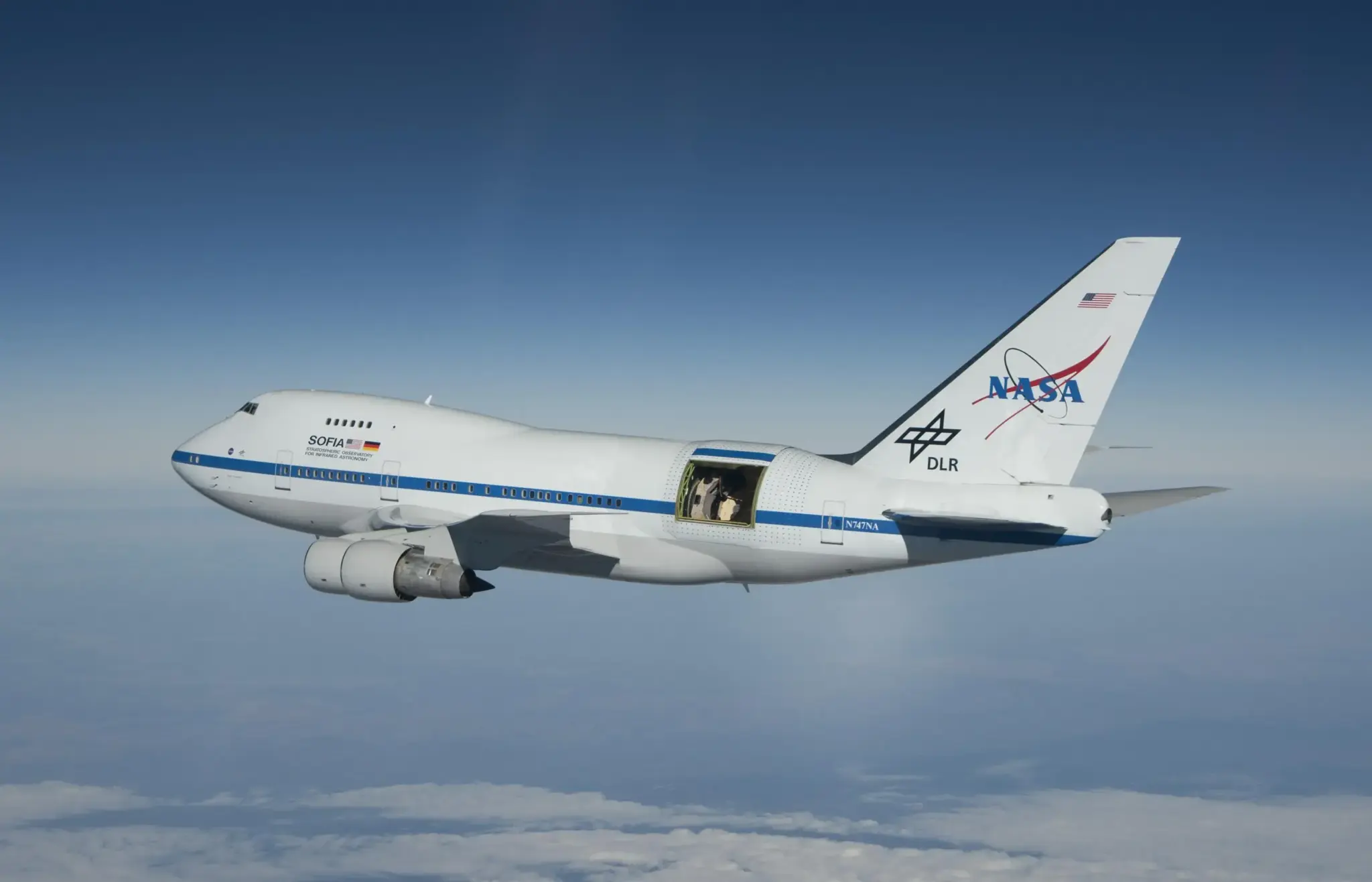About SOFIA (Stratospheric Observatory for Infrared Astronomy)
- SOFIA was a telescope mounted on a Boeing 747 SP aircraft that studied infrared light, essentially heat, emitted by objects in the universe.
- SOFIA is operated jointly by NASA and the German space agency.
- It is the world’s largest airborne astronomical observatory, complementing NASA’s space telescopes as well as major Earth-based telescopes.
- The observatory, fitted with a 8.9-foot-wide (2.7 meter) telescope with a nearly 20-ton mirror, used a door in the side of the aircraft to peer at the sky.
- Flying into the stratosphere at 38,000-45,000 feet put SOFIA above 99 percent of Earth’s infrared-blocking atmosphere, allowing astronomers to study the solar system and beyond in ways that are not possible with ground-based telescopes.
- SOFIA could observe the universe in the widest range of infrared light.
- The airplane is capable of ten-hour flights, with flight paths chosen to keep ahead of the sunrise and maximize the amount of darkness.
- The observatory’s mobility allowed researchers to observe from almost anywhere in the world, and enabled studies of transient events that often take place over oceans, where there are no telescopes.
- For example, astronomers on SOFIA studied eclipse-like events of Pluto, Saturn’s moon Titan, and Kuiper Belt Object MU69, the next flyby target for NASA’s New Horizons spacecraft, to study the objects’ atmospheres and surroundings.
- The SOFIA project was prematurely ended in 2022 after operating for 12 years.
Q1) What is an Asteroid?
Asteroids are small, rocky objects that orbit the sun. Although asteroids orbit the sun like planets, they are much smaller than planets. They are leftovers from the formation of our solar system. From being as small as 10 meters across to as huge as 530 km in diameter, asteroids have varied sizes
Source: Water detected on the surface of an asteroid for the 1st time ever
Last updated on December, 2025
→ Check out the latest UPSC Syllabus 2026 here.
→ Join Vajiram & Ravi’s Interview Guidance Programme for expert help to crack your final UPSC stage.
→ UPSC Mains Result 2025 is now out.
→ UPSC Notification 2026 is scheduled to be released on January 14, 2026.
→ UPSC Calendar 2026 is released on 15th May, 2025.
→ The UPSC Vacancy 2025 were released 1129, out of which 979 were for UPSC CSE and remaining 150 are for UPSC IFoS.
→ UPSC Prelims 2026 will be conducted on 24th May, 2026 & UPSC Mains 2026 will be conducted on 21st August 2026.
→ The UPSC Selection Process is of 3 stages-Prelims, Mains and Interview.
→ UPSC Result 2024 is released with latest UPSC Marksheet 2024. Check Now!
→ UPSC Prelims Result 2025 is out now for the CSE held on 25 May 2025.
→ UPSC Toppers List 2024 is released now. Shakti Dubey is UPSC AIR 1 2024 Topper.
→ UPSC Prelims Question Paper 2025 and Unofficial Prelims Answer Key 2025 are available now.
→ UPSC Mains Question Paper 2025 is out for Essay, GS 1, 2, 3 & GS 4.
→ UPSC Mains Indian Language Question Paper 2025 is now out.
→ UPSC Mains Optional Question Paper 2025 is now out.
→ Also check Best IAS Coaching in Delhi

















